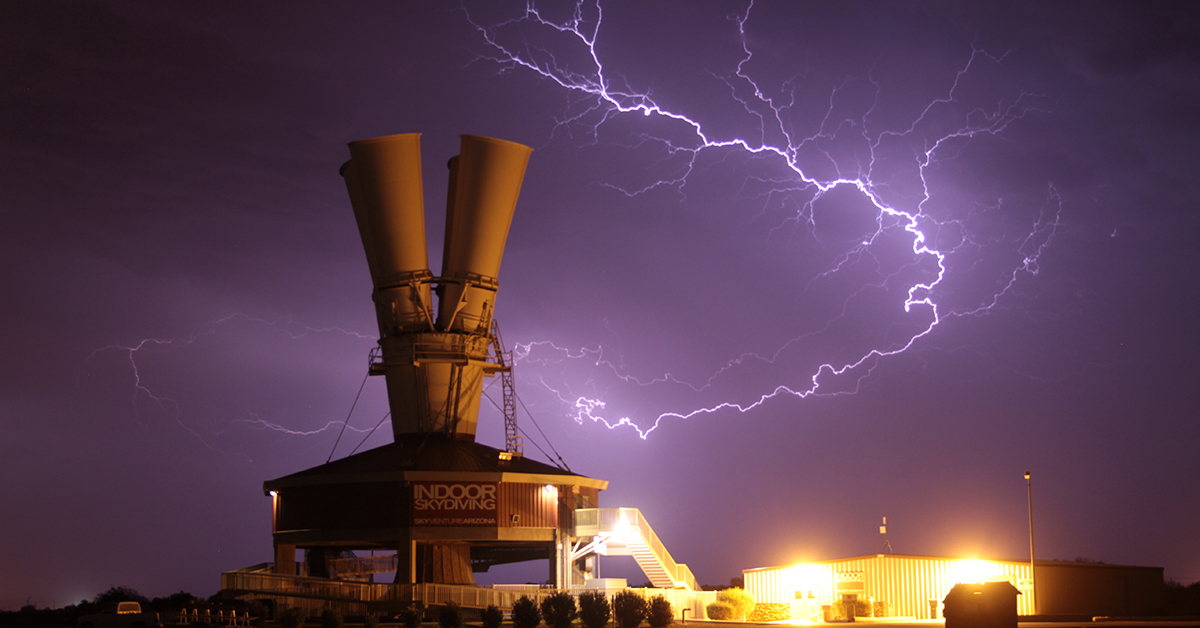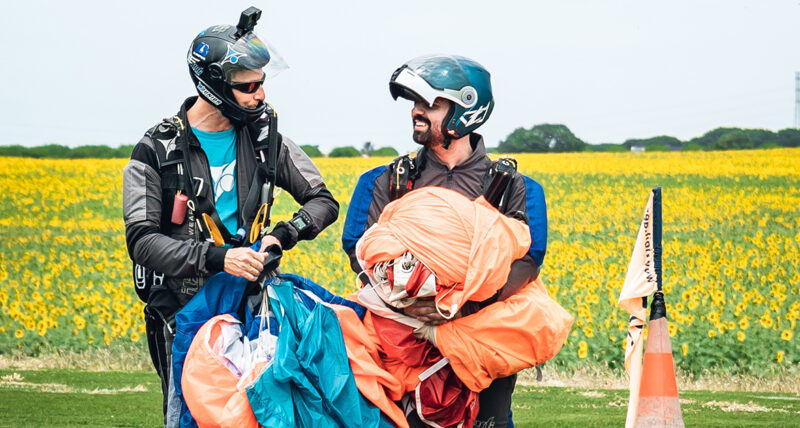Indoor skydiving progression matters. Here’s why
Words by Fleur Jones
Images by Niklas Daniel
As UK winter closes in, most of us stop staring hopefully at grey skies and head indoors to scratch the itch for freefall. For many, that means the wind tunnel – the “windy tube.”
As we all know, indoor skydiving isn’t just a training tool. It’s recognised as a sport in its own right by the FAI – and it’s the way to sharpen skills during the off-season, try out new moves, team-train and stay socially connected (largely through scrambles and tunnel jam events).
But there’s a catch, isn’t there?
One of the conversational themes that has been playing out in recent seasons is the idea that evolving regulatory principles has turned the tunnel into more of a walled garden than it has ever been. I’ve been watching it evolve longer than most folks have, and I’d like to speak up on behalf of these decisions. I know these changes aren’t popular, but hear me out; they’re necessary, and they do benefit you in a meaningful way. Here’s why.
Staying current: parallels with the sky
Think about how we approach actual skydiving. None of us would leap back into tracking, freeflying, or wingsuiting after a long break without brushing up on drills, checking gear, or being able to flash the proper rating to an STO when requested. The same logic applies to the tunnel. Skills fade. Currency matters. As a sport in and of itself, indoor skydiving requires its own precision, its own safety standards and its own progression system.
The IBA system: safety and standards
That’s where the IBA (International Bodyflight Association) comes in. Since 2003, the IBA has set structured skill levels across more than 100 iFLY and franchised tunnels worldwide. Their system is the tunnel equivalent of British Skydiving ratings, designed to prove competence, ensure safety and give flyers a clear path forward.
Importantly, the IBA framework is aligned with ISO standards and supported by UK Health and Safety Executive practices. No tunnel gets built without safety oversight, and no flyer should step in without clear, measurable competence.
Why ratings matter
Skeptical? You’re not alone. Many skydivers think: “I’ve got thousands of jumps – why do I need someone to sign me off in a tunnel?”
Here’s the reality: tunnels are unforgiving environments. You’re flying in a 12-foot glass tube where a lapse in control can cause serious injury. What feels effortless in the sky requires a new level of precision indoors – flying perfectly “down the tube” 100 times out of 100.
Structured progression isn’t bureaucracy; it’s safety. It’s also how most sports work. Skiing, gymnastics, boxing – all have staged assessments that keep people safe while motivating them to improve.
The perishable skill problem
Both skydiving and tunnel flying are perishable skills. Stop for a few months and you’ll feel it. As the old ballet saying goes:
- Miss one day, you know it.
- Miss two days, your teacher knows it.
- Miss three days, everyone knows it.
Indoor skydiving is no different. Without practice, your edge dulls. That’s why the IBA requires flyers to log at least one minute of tunnel time every six months – your personal “CPD” for flight… a pretty bare minimum, wouldn’t you agree?
Data, accountability and progression
Progression systems aren’t just for safety, they’re tools for growth. “What gets measured gets managed,” as Peter Drucker said.
Logging levels helps flyers, coaches and tunnel operators identify strengths, weaknesses and risks. It also ensures events like scrambles and tunnel jams are run smoothly, with each participant flying at the right level.
Humility in the tube
Resistance often comes down to pride. None of us relish being critiqued by someone younger than us or less experienced in skydiving. But humility is part of growth. Indoor skydiving is its own discipline, and respecting its structure keeps us safe and progressing together.
Closing thoughts
Indoor Skydiving offers us a way to stay sharp, safe and connected through the winter months. The IBA progression system isn’t about limiting us – it’s about supporting our learning, protecting our community, and helping us all get the most out of our time in the tunnel.
Who wouldn’t want to be on board with that?
With thanks to Wayne Loxton of the IBA for his informative support and guidance.
About the author
Women’s World Record Holder and British Skydiving Ambassador Fleur Jones is an MA, Dip RBS (Teacher’s Training Course), FISTD (Examiner) ARAD and a Certified Dance Educator. She holds an AFFI and IBA FS Tunnel Coach rating. She is sponsored by Sun Path, Vertex, Cookie Helmets and Alti-2 Europe. Find her on Facebook, Instagram and YouTube.



